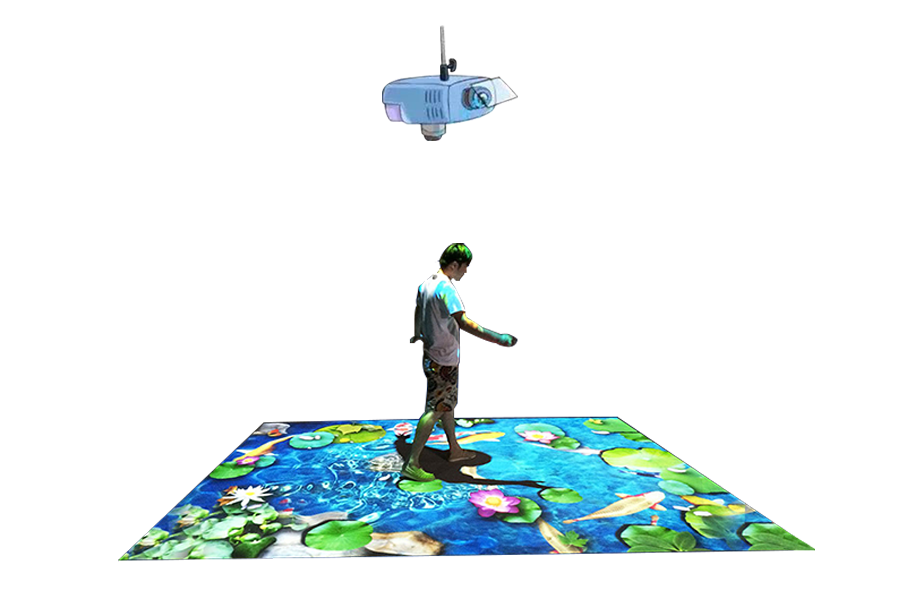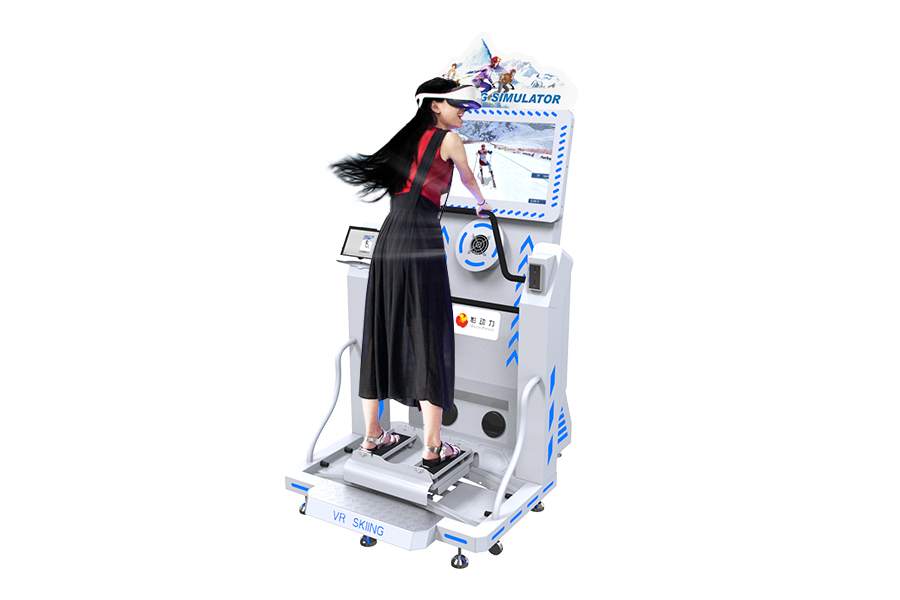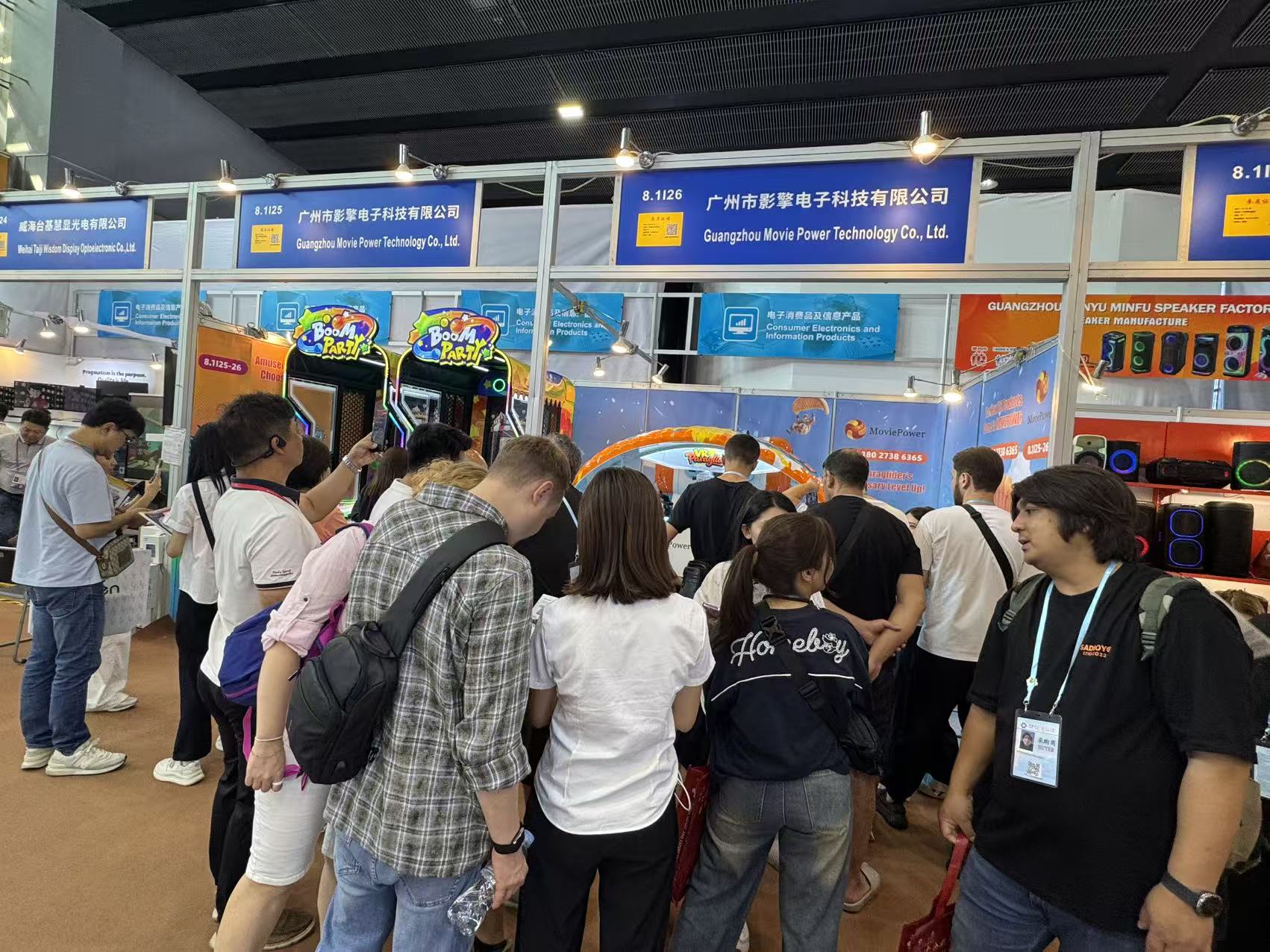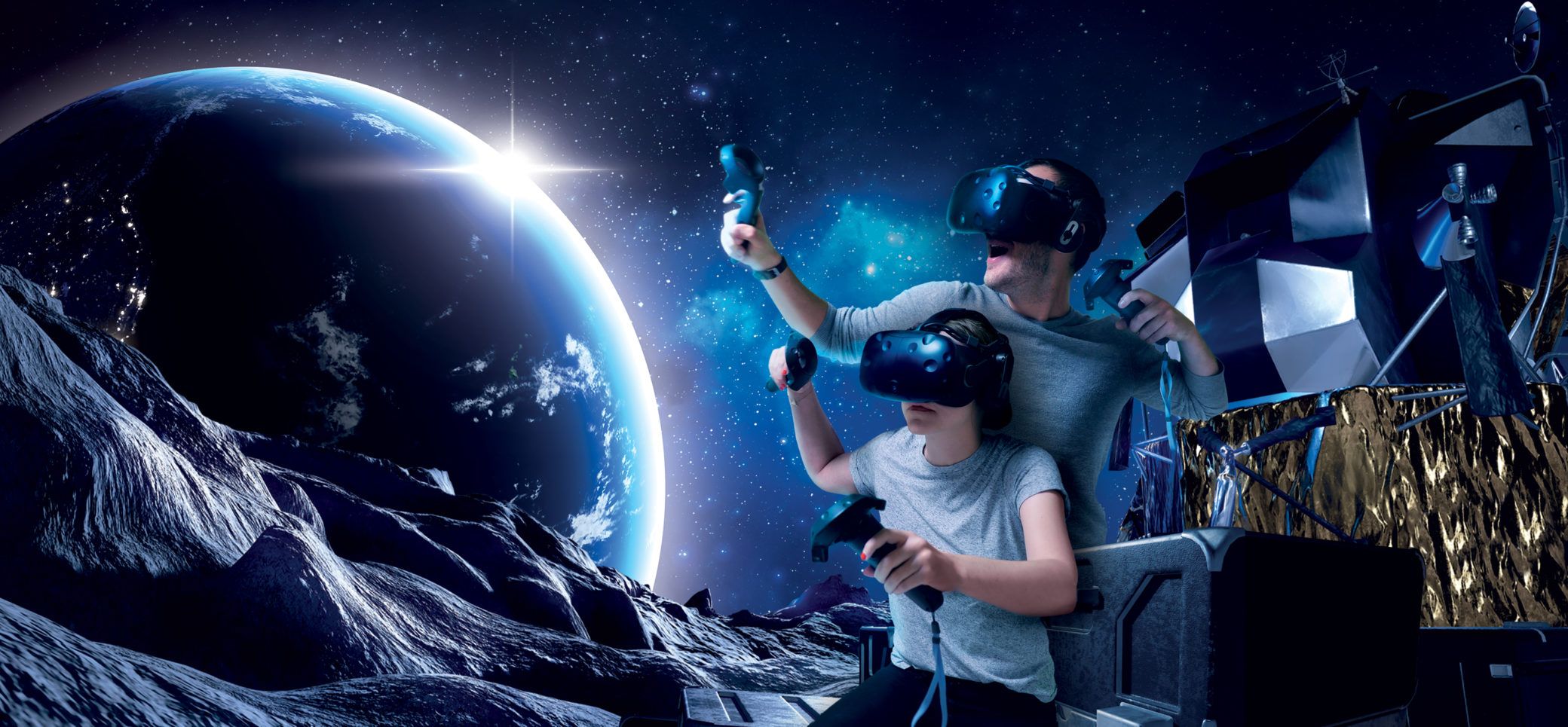Realta virtuale (realtà virtuale) ha trasformato il modo in cui viviamo i contenuti digitali, immergendo gli utenti in ambienti realistici. Un aspetto innovativo della tecnologia VR è l'introduzione di Tapis roulant VR, uno sviluppo rivoluzionario che porta le esperienze virtuali a un livello completamente nuovo.
In questo blog, approfondiremo le loro complessità, Facciamo un passo nel regno virtuale con la sua introduzione.
Decodificare il tapis roulant VR

Tapis roulant VR, noto anche come Piattaforme ambulanti VR, ridefinire il modo in cui interagiamo con gli spazi virtuali. Questi dispositivi consentono agli utenti di camminare o correre fisicamente in un'area designata mentre sono immersi in un ambiente virtuale. L'integrazione della tecnologia VR con una piattaforma pedonale migliora l'esperienza sensoriale, far sentire gli utenti come se fossero veramente presenti nel mondo digitale.
Evoluzione del tapis roulant VR
Le radici dei tapis roulant VR risalgono ai primi anni 2000. Inizialmente concepito come accessorio da gioco, ha gradualmente acquisito implicazioni più ampie come potente strumento per colmare il divario tra la locomozione virtuale e quella reale.
Combinato con Uovo VR, questo gioco VR rappresenta un passo avanti significativo nell'evoluzione di questi dispositivi.
Nella sua essenza, un tapis roulant di realtà virtuale è un dispositivo meccanico che integra le interfacce di realtà virtuale consentendo agli utenti di camminare o correre sul posto.
Componenti del tapis roulant VR
Questi dispositivi ad alta tecnologia comprendono a piattaforma di base, strutture di sostegno, imbracature, dispositivi di localizzazione, sensori avanzati, sistemi di tracciamento del movimento, e design ergonomici. Garantire il comfort dell'utente rimane parte integrante del suo design, da qui la presenza di attacchi per scarpe ammortizzati.
La combinazione di questi elementi crea un paesaggio virtuale che risponde agli utenti’ movimenti, creando un incontro davvero coinvolgente.
Come funziona il tapis roulant VR

Comprendere il loro funzionamento richiede di affrontare la meccanica del piede e l’integrazione con l’ambiente VR.
La sua funzionalità risiede nel loro design del tapis roulant omnidirezionale, consentendo agli utenti di muoversi liberamente in qualsiasi direzione. Simile alla realtà virtuale dell'aeroski, una macchina per esercizi domestici, i tapis roulant tecnologici imitano i movimenti naturali della camminata o della corsa, migliorare il senso di realismo negli ambienti virtuali.
Meccanica del piede
Questo allontanamento dai tradizionali design del tapis roulant rappresenta un cambiamento di paradigma, promettendo un aspetto più naturale, coinvolgente, e un futuro user-friendly sia per gli appassionati di realtà virtuale che per gli appassionati di fitness.
Ha varie caratteristiche:
- Libertà senza cintura: Questa partenza trasforma l'esperienza dell'utente, consentendo senza restrizioni, movimento naturale.
- Passo centrato: Piuttosto che essere confinato in una posizione fissa, gli utenti possono camminare liberamente, esplorare paesaggi virtuali rimanendo centrati sul tapis roulant.
- Accessori per scarpe: Questi accessori possono ridurre al minimo l'attrito per un movimento fluido e garantire che gli utenti rimangano connessi alla piattaforma omnidirezionale.
- Piattaforma omnidirezionale: I tapis roulant VR introducono una piattaforma omnidirezionale che consente il movimento in qualsiasi direzione. Gli utenti possono avanzare senza problemi, all'indietro, eludere, o perno, rispecchiando la versatilità del movimento umano naturale.
Sincronizzazione con VR World
Il tapis roulant VR si interfaccia con il visore VR tramite rilevatori di movimento e giroscopi. Questi elementi monitorano la velocità e la direzione di ogni passo, comunicando questi movimenti in modo sincrono nel mondo VR.
La loro magia sta nella sincronizzazione con il mondo VR. Ovviamente, la straordinaria esperienza non è solo in questa macchina, può anche essere monitorato in altri sport VR, come lo sci virtuale, gabbia per squali VR, e così via.
Per esempio, immagina di giocare una partita di tennis virtuale con a Simulatore di tennis in realtà virtuale– ogni passo, giro, e il salto si rispecchia perfettamente nel regno digitale. Questa sincronizzazione può anche creare un livello di immersione senza precedenti, confondendo i confini tra il mondo fisico e quello virtuale.
Vantaggi del tapis roulant VR
Con meccanica naturale del piede e libertà omnidirezionale, gli utenti possono esplorare i mondi virtuali in modo autentico. Dalle emozioni di gioco potenziate alla promozione del fitness e all'aiuto nella riabilitazione medica, Ridefiniscono il modo in cui interagiamo con i contenuti digitali, Fornire una piattaforma dinamica e coinvolgente per l'intrattenimento, esercizio, e applicazioni terapeutiche.
Il tapis roulant di VR contiene cinque volte benefici. Esploriamo ciascuno.
Immersione migliorata
Le macchine da allenamento offrono un livello di immersione senza precedenti, particolarmente evidente in applicazioni come il Simulatore di sci VR. Gli utenti possono praticamente attraversare le piste coperte di neve, Sentire la resistenza e i cambiamenti del gradiente come se stessero sciare in montagna. Questo accresciuto senso del realismo contribuisce a un'esperienza di gioco e intrattenimento senza pari.
L'esperienza del cammino fisico promuove un'immersione migliorata nel mondo della realtà virtuale. Questo Il coinvolgimento a tutto il corpo fornisce un'esplorazione virtuale a 360 gradi, rendere gli utenti parte del contenuto piuttosto che semplici spettatori.

Promuove il fitness
Oltre il gioco, Hanno trovato l'applicazione in fitness. Lo statico, Tuttavia, l'impegno fisico di questa macchina per esercizi a casa facilita gli allenamenti cardio, indulgendo in ambienti esaltanti di giochi o VR.
Oltretutto, l'integrazione di Ski VR non solo fornisce un allenamento esaltante, ma rende anche l'esercizio più coinvolgente. Gli utenti possono sperimentare il brivido dello sci senza lasciare il comfort delle loro case, promuovere in modo divertente l'attività fisica.
Gli allenamenti di gamificazione mascherano efficacemente la macinatura, razionalizzare il fitness con piacere.
Versatilità nell'esplorazione
Gli utenti possono esplorare mondi virtuali con libertà senza precedenti, a piedi, jogging, o scattare in qualsiasi direzione, amplificare il senso di avventura ed esplorazione. Ma allo stesso tempo, Può eccellere nel replicare il movimento naturale, catturare l'essenza di camminare o correre senza i vincoli di una cintura meccanica.
Miglioramento del coinvolgimento degli utenti
La libertà di movimento che la macchina offre migliora il coinvolgimento degli utenti, Fare routine di fitness, esperienze di gioco, ed esplorazione virtuale più divertente e coinvolgente.
Applicazione in riabilitazione medica
Nel regno terapeutico, I tapis roulant VR hanno importanza nella riabilitazione fisica. Questi dispositivi sono sempre più utilizzati nella riabilitazione medica, fornire un ambiente controllato per i pazienti a Ritrovare mobilità e coordinamento. Forniscono uno spazio controllato per i pazienti che hanno problemi di mobilità per recuperare la forza e il coordinamento in una cassaforte, ambiente simulato.
Confronto con la configurazione VR tradizionale
A differenza dei sistemi VR tradizionali che si concentrano sui controller portatili e limitano il movimento a causa di vincoli spaziali, I tapis roulant VR eccellono nell'offerta senza restrizioni, Interazione fisica e virtuale simultanea.
Omni un tapis roulant, Per esempio, consente agli utenti di interagire con l'ambiente virtuale utilizzando movimenti del corpo naturale, Migliorare l'esperienza complessiva. Un'esperienza autentica, meno il rischio di urtare in oggetti.
Limitazioni tecnologiche
Nonostante i loro numerosi vantaggi, affrontano limiti tecnologici.
- Requisiti di spazio: I tapis roulant VR richiedono un ampio spazio fisico, limitare l'utilizzo in ambienti più piccoli.
- Vincoli di costo: Alti costi iniziali possono ostacolare l'adozione diffusa, Soprattutto per i singoli consumatori.
- Sfide di compatibilità: Garantire l'integrazione senza soluzione di continuità con i sistemi VR esistenti pone ostacoli tecnici.
- Configurazione complessa: L'installazione e la calibrazione possono essere intricate, richiedere competenze tecniche e tempo.
- Problemi di sicurezza degli utenti: I potenziali rischi di collisioni o incidenti durante l'uso richiedono un'attenta considerazione e misure di sicurezza.
- Potenziale cinetosi: L'uso intensivo o prolungato può indurre la cinetosi in alcuni utenti.
- Problemi di portabilità: I tapis roulant di VR possono mancare di portabilità, limitare l'utilizzo in diverse posizioni.
- Dipendenza dal contenuto VR: L'esperienza si basa fortemente sulla disponibilità e sulla qualità del contenuto VR compatibile.
Considerazioni legali ed etiche
Man mano che la piattaforma ambulante diventa più diffusa, Considerazioni legali ed etiche vengono in primo piano. Problemi come:
- Privacy dell'utente: Proteggere i dati degli utenti e garantire la conformità alle normative sulla privacy è fondamentale per l'uso etico.
- Standard di sicurezza: Aderente agli standard e ai regolamenti di sicurezza stabiliti è fondamentale per prevenire gli incidenti e garantire il benessere degli utenti.
- Regolazione del contenuto: Implementazione di misure per monitorare e controllare il contenuto disponibile su di essi per prevenire esperienze inappropriate o dannose.
- Proprietà intellettuale: Rispettare i diritti di proprietà intellettuale e gli accordi di licenza quando si incorpora contenuti di terze parti nelle esperienze di formazione VR.
- Problemi di responsabilità: Chiarire la responsabilità e la responsabilità in caso di incidenti o lesioni relative all'uso della macchina.
- Misure di sicurezza: Implementazione di solide misure di sicurezza per proteggere gli utenti da potenziali minacce informatiche o incidenti di hacking.
- Prevenire la dipendenza: Monitoraggio e affronto potenziali comportamenti di dipendenza correlati all'uso esteso del tapis roulant per promuovere l'uso responsabile.
- Conformità normativa: Rimanere al passo con le normative in evoluzione nei settori VR e tecnologici per garantire la conformità in corso.
- Sensibilità culturale: Essere consapevoli delle differenze culturali e delle sensibilità nel contenuto VR per evitare offese involontarie o controversie.
- Sicurezza dei dati: Implementazione di misure robuste per garantire i dati degli utenti, prevenire l'accesso non autorizzato o le violazioni dei dati.
Trovare un equilibrio tra innovazione e responsabilità è essenziale per lo sviluppo responsabile della tecnologia di formazione VR.
Previsioni future per il tapis roulant VR
Guardando avanti, Il futuro dei tapis roulant di VR ha entusiasmanti possibilità.
Man mano che diventano più accessibili e raffinati, la loro integrazione in vari settori, compresi i giochi, fitness, e terapia, dovrebbe salire.
Progressi nella tecnologia dei sensori, Grafica di realtà virtuale, e la progettazione dell'interfaccia utente è pronta a migliorare l'esperienza VR complessiva. Un'immersione VR migliorata, Giochi di fitness, passeggiate cinematografiche, e incorporazioni della realtà aumentata – Il futuro ha potenti sorprese.
Approfondimenti conclusivi
Insomma, Il tapis roulant di gioco ha rappresentato una convergenza dei mondi virtuali e fisici. L'esperienza immersiva e la formazione per la libertà offerta dalla macchina da allenamento, insieme alle loro applicazioni nei giochi, fitness, e riabilitazione, Segna un passo significativo nell'evoluzione della tecnologia della realtà virtuale.
Mentre continuiamo a spingere i confini dell'innovazione, I tapis roulant VR sono in primo piano, invitando gli utenti a entrare in una nuova dimensione della realtà digitale.


